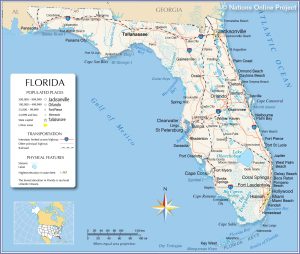The Trillion Dollar Question of Space Mining

Another day, another argument about whether bringing home resources mined in space would even be legal. In fact, it’s worth exploring now even though about the only guides we have are one or two decades-old treaties, including the Outer Space Treaty of 1967. Realistically, if space mining companies bring loads of rare-Earth elements to sell back on Earth, they’re going to sell to any nation that is willing to acknowledge that their claim is a valid one.
The 1967 treaty does not specifically ban or permit private claims on space resources. It simply states that sovereign nations should not stake a claim in outer space. Perhaps its signatories did not think this would be an issue any time soon and, if it became one, they could revisit the issue and negotiate an updated treaty.
It’s becoming more of an issue these days. Luxembourg is aiming to become one central player in asteroid mining by investing in space mining companies and building a legal framework that it hopes will attract major players. As Luxembourg’s deputy prime minister, Étienne Schneider, told The Guardian, “Our aim is to open access to a wealth of previously unexplored mineral resources, on lifeless rocks hurtling through space, without damaging natural habitats.”
Which is a good point. While bloggers and media types argue about the legal and ethical aspects of space mining, terrestrial mining companies damage Earth’s ecosystems by tearing up the landscape and using toxic chemicals to extract minerals and metals. In some cases, they even ally with governments to force out communities that reside on top of valuable resources. While we might argue about the ways that human greed destroy our planet, the simple truth is that demand for rare-Earth elements isn’t going away any time soon.
Fortunately, there are already a few corporations that would like to fill that demand by tapping resources on what Schneider’s described as “lifeless rocks hurtling through space.” Deep Space Industries is preparing a constellation of prospecting satellites called Fireflies for a 2017 launch. Planetary Resources is taking a slightly different approach with a series of satellites called Ceres, which will initially be used for Earth observations, but the ultimate goal is to develop the capability to remotely sense whether an asteroid might be worth exploring before actually going there.
Planetary Resources and Ceres
The Trillion Dollar Question is how much of the resources mined in space will make it back to Earth. One must always keep in mind that serious space projects are going to have bills to pay and these mining companies will want to bring a few loads home to sell so they have something to show for the investment. By the same token, they may be able to cut costs using In-Situ Resource Utilization (ISRU) to enhance and fuel the hardware. While this shouldn’t be taken as an “either-or” scenario, it’s fair to say that not all of the resources harvested in the asteroid belt are going to make it back to Earth.
What will it be used for then? If you’re familiar with the Mars Direct plan, some of this may seem like I’m just repeating the obvious. Rocket fuel can be manufactured using resources found on Mars. Future Martians might also make plastics using the same raw materials. Food, energy and oxygen will have to be produced locally as much as possible. Mining companies may be more interested in using metals found in the asteroid belt to develop the infrastructure they’ll need simply because such a thing would be cheaper in the long run than shipping that infrastructure from the bottom of Earth’s gravity well. Not only will a significant amount of raw materials mined in space be used for space efforts, but the amount of materials that absolutely must be shipped from Earth will naturally decline over the course of several centuries.
How ISRU Can Work
A panel of experts from NASA, Honeybee Robotics and the Center for Space Nuclear Research discuss what was current in the world of ISRU in 2014.
So much for trade over the long-term? Not quite. Future permanent space settlements will not only trade with Earth for items that can’t be produced locally, but also eventually trade with one another. Imagine the interplanetary version of trading caravans that loop endlessly between settlements, if you like. These caravans may make Earth one stop along their route, but Earth certainly won’t be the only stop. It’s even possible that, at some point, Earth wouldn’t be receiving the majority of the resources being harvested in space.
One thing you can be sure of, though, is that while the legal types argue about who owns resources mined in space, others are preparing for the increased economic activity that would come with wide-scale asteroid mining operations. They aren’t going to make the rather foolish move of completely ignoring the legalities if they want to cover costs by selling the first few loads to Earth. Neither are they going to wait for the judicial system to set the first few precedents before getting this show on the road. Even given worst case scenario, they may simply move their headquarters to Luxembourg.
The Future of Asteroid Mining
So, basically, mining in space does have a future even while we’re all sitting here arguing about the legalities. It will be hard to argue with the first few trillion-dollar loads of rare-Earth elements coming in from the asteroid belt. At the very least, it will give terrestrial mining companies something to think about as their Earthbound mines start to play out and the increased economic activity that come with robust space mining starts to come into play.
Some Good Books To Read
LEGO Sets!
[ebayfeedsforwordpress feed=”http://rest.ebay.com/epn/v1/find/item.rss?keyword=%28lego+NASA%2CLego+space+shuttle%2CLego+space%2Clego+space+station%29&sortOrder=BestMatch&programid=1&campaignid=5337337555&toolid=10039&listingType1=All&lgeo=1&feedType=rss” items=”5″]











